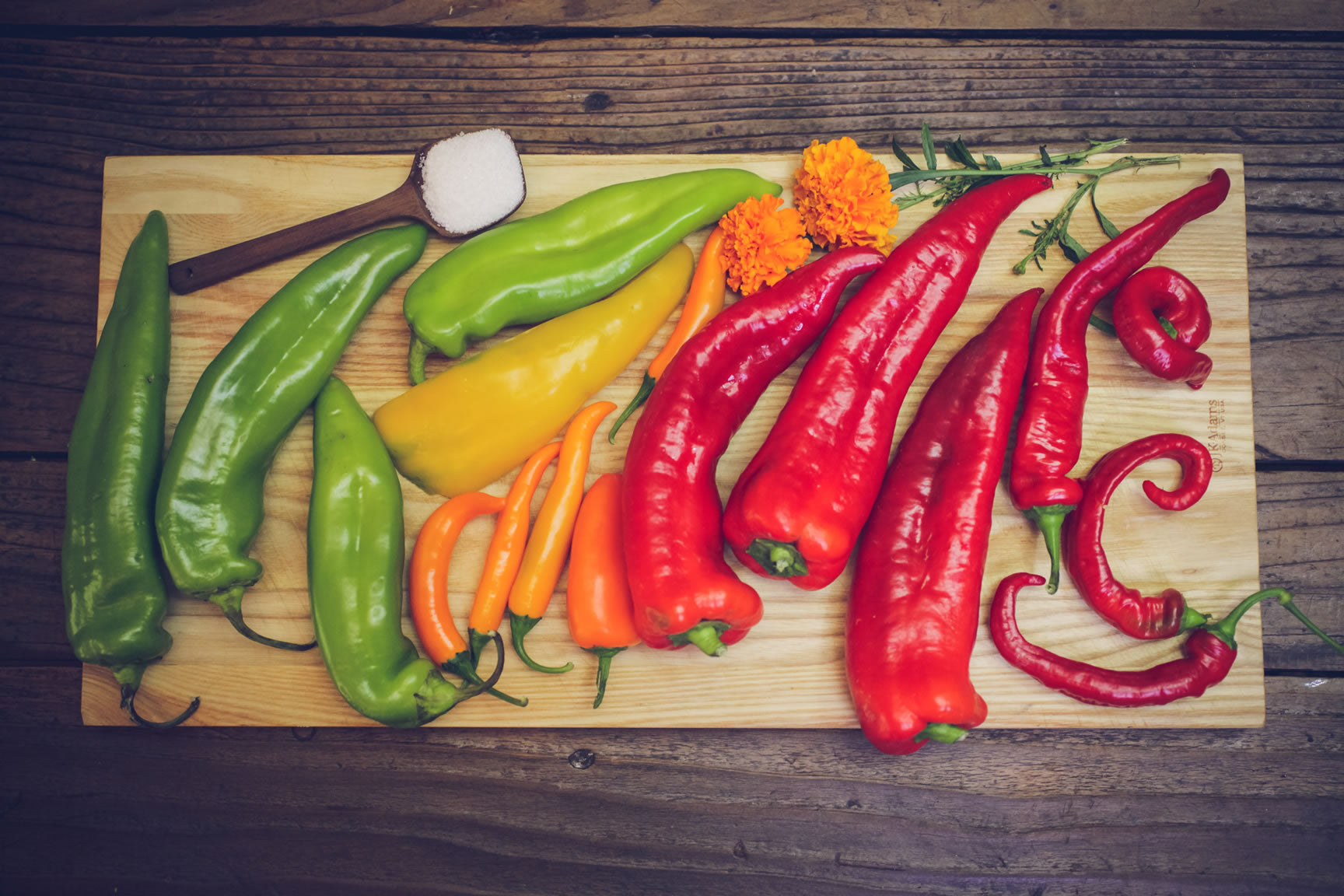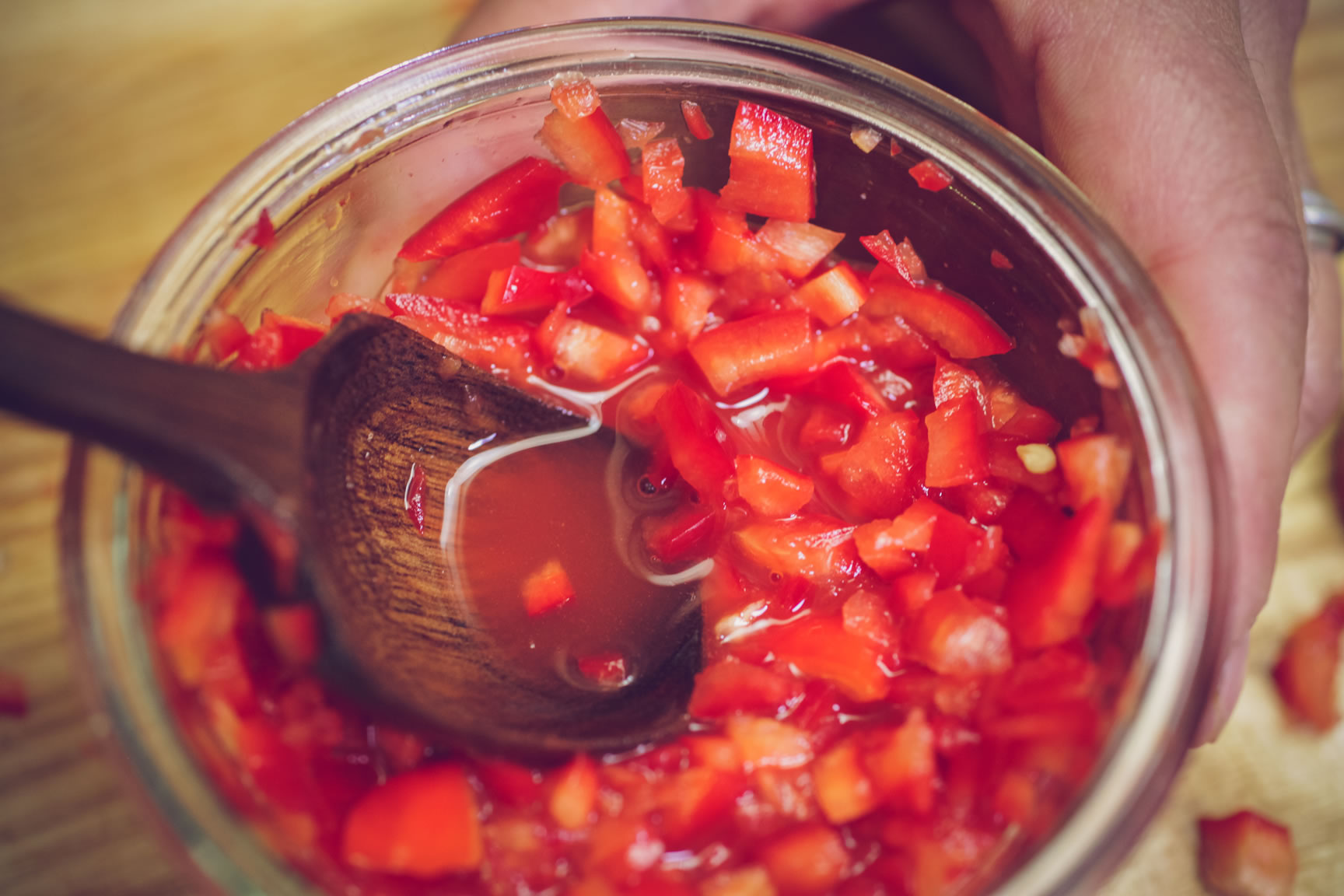- Continue Shopping
- Your Cart is Empty
Probiotic Salsa Starter: Fermented Chile Pepper Paste

What You'll Need
Equipment
- good kitchen knife and clean cutting surface
- gloves (optional)
- Pint Mason Jar
Ingredients
- 1 1/2 pounds of chiles, stemmed
- 2 teaspoons sea salt
This recipe can swing so many ways, and it does resemble others that we have published previously. But really, this is just a measure of how versatile the ferment is; it can be used, as hot sauce, marinade, as a probiotic salsa starter. That’s really what we are dreaming of, here, as summer salsa season winds down; a fresh, funky salsa to spice up gray January. Make some of this pepper paste now, and dole it out in the winter months, a spoonful at a time. Think of it as a base for all sorts of culinary feats, channelling the warm tones of summer into the cool shades of winter. The idea came from Kirsten Shockey, who mentioned using it just this way when she and Christopher visited the store a few months ago. The thought of using summer ferments to kick off probiotic salsas and sauces in winter really struck a chord with us. We plan to make at least a gallon of this now, and use it to kickstart recipes made from seasonal and canned foods all winter long. Everything from kraut to kimchi to pickles to salsas and sauces can benefit from the addition of a little pepper paste. Those recipes will come later, as the season progresses; for now, consider this recipe for a quart of peppers as a teaser, a promise of good things to come, a little scoop of summer in a jar. Bonus: this one ages well, getting better and better over time. Scale the recipe up or down, as we have done here, to allow for the amount of peppers you have available when you set out to make this recipe. To keep it simple, the baseline recipe makes about a quart of pepper paste.
Be aware that fermenting peppers often develop a layer of white kahm yeast on top; this yeast should be scraped off before using. Don’t bother scraping it off as it ferments, though; it’ll just grow back, and you’ll lose precious pepper paste.
If you have a thin-fleshed pepper like a Habañero, it may not make enough brine to ferment well. In that case, consider blending it with a small amount of similarly colored bell pepper; the juicy bell pepper provides the brine, while the Habañero stokes the fire.
Directions
Choose peppers that are fresh and firm; these will yield more brine than a wrinkled, tired looking pepper. Prepare the chiles. Remove the stems, but leave the seeds intact for a spicier ferment. 
Chop the peppers as finely as possible, or run them through a blender of food processor and pulse until coarsely chopped. Consider wearing gloves to handle the peppers, as very hot peppers can burn with prolonged contact with skin and eyes. Alternatively, rub a small amount of coconut or other cooking oil on your hands before beginning the recipe; this creates a barrier between your skin and the capsaicin. Capsaicin is concentrated in the white pith and the seeds or peppers more than in the flesh of chiles.
Add the salt and mix well; the peppers should release enough brine to cover themselves, though not as much as a cabbage-based kraut usually does. 
Press the mixture firmly into a crock or jar. If the paste has been blended too finely, the brine may end up on the bottom; if this happens, shake the jar every day until the air bubbles trapped in the paste are released and the brine can make its way back up to the top.
Weight the pepper paste, if desired, and secure a loose fitting lid or an airlock, if using a mason jar. When we use Weck jars, as we have here, the CO2 escapes by pushing out between the gasket and the glass rim; we “burp’ the ferment occasionally by pulling on the protruding tongue of the orange gasket.
Set in a cool place to ferment, out of direct sunlight, for at least 3 weeks. Check the chiles occasionally to make sure the chiles are beneath the brine. This ferment may be eaten after 3 weeks, but something really magical happens in the aging process; 3-6 months is not too long to let this one go. It develops a flavorful acidity in the first few weeks, and continues to become richer and more complex as it sits.
You may see the white kahm yeast forming on the surface. This is normal, especially with peppers; leave it undisturbed until you want to use the paste, then scrape it off and store the remainder in an airtight container in the refrigerator. If a ferment becomes exceptionally yeasty on top, consider bedding it down in the fridge sooner rather than later. The yeast is harmless, but too much of it can impact the flavor of a ferment for the worse.
Over to You
It’s part of our mission here at Mountain Feed to help you make delicious, sustainable, homemade food more often. Stop by and say hello on Facebook, Twitter, Instagram or Pinterest. Or, as always, you can do it the old fashioned way and come by the store to speak with one of our in-house experts.
